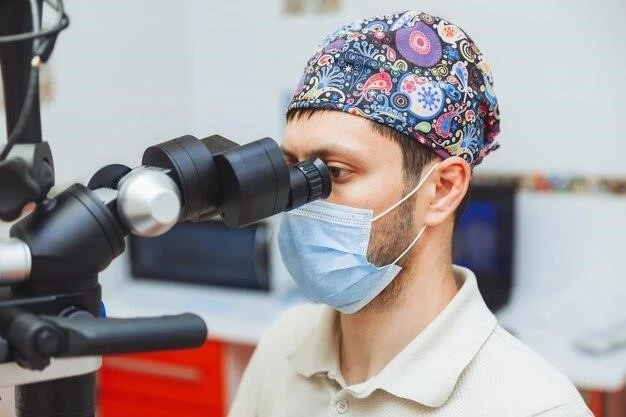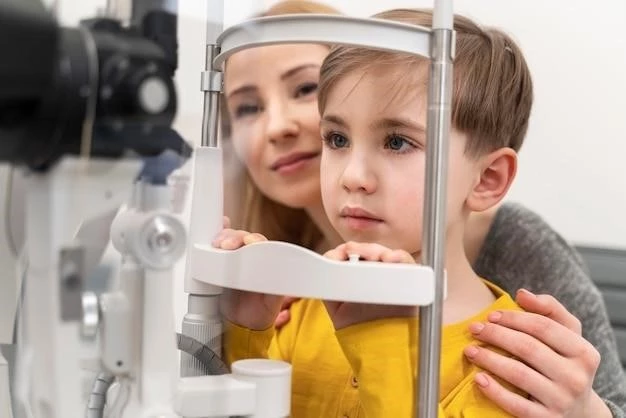Introduction
The term ophthalmomandibulomelic dysplasia refers to a rare genetic syndrome characterized by unique abnormalities in the eyes‚ jaw‚ and limbs.
Definition and Background
Ophthalmomandibulomelic dysplasia‚ first described in 1964‚ is a rare genetic syndrome characterized by unique abnormalities in the eyes‚ jaw‚ and limbs. It is known for causing complete blindness due to corneal opacities‚ difficulties in mastication from temporomandibular fusion‚ and anomalies in the arms.
This syndrome was initially observed in a family by Pillay‚ who noted distinct changes such as corneal clouding‚ temporomandibular fusion‚ absent coronoid process‚ and limb anomalies including radiohumeral dislocations and aplasia of specific bone structures. The condition is also referred to by synonyms like Pillay syndrome and OMM syndrome‚ reflecting its complex nature and impact on various body systems.

Clinical Features
Ophthalmomandibulomelic dysplasia is characterized by complete blindness due to corneal opacities‚ difficulties in mastication due to temporomandibular fusion‚ and anomalies in the arms.
Ophthalmic Manifestations
Ophthalmomandibulomelic dysplasia is characterized by complete blindness due to corneal opacities. These individuals may experience difficulties in mastication due to temporomandibular fusion‚ along with anomalies in the arms such as radiohumeral dislocations and aplasia of specific bone structures.
Mandibular Abnormalities
Mandibular abnormalities in ophthalmomandibulomelic dysplasia include temporomandibular fusion‚ absent coronoid process‚ obtuse mandibular angle‚ and difficulties in mastication. These anomalies impact the individual’s ability to chew and may lead to distinct jaw structure abnormalities.
Limb Anomalies
In ophthalmomandibulomelic dysplasia‚ limb anomalies manifest as radiohumeral and radioulnar dislocations‚ aplasia of the lateral humeral condyle‚ head of radius‚ and lower third of ulna. These limb abnormalities contribute to the unique clinical presentation of this rare genetic syndrome.
Genetics and Pathogenesis
Caused by genetic mutations‚ ophthalmomandibulomelic dysplasia results from hereditary or random occurrences affecting various body systems. These mutations may arise from diverse sources.
Causes of Ophthalmomandibulomelic Dysplasia
Ophthalmomandibulomelic dysplasia is caused by genetic mutations‚ which can be hereditary or arise randomly. These mutations may result from various sources‚ impacting different body systems and functions.
Genetic Mutations and Inheritance Patterns
Ophthalmomandibulomelic dysplasia is caused by genetic mutations‚ which can be inherited or arise spontaneously. These mutations may stem from various causes such as heredity‚ random occurrences‚ environmental factors‚ or viral infections‚ impacting different aspects of bodily functions.
Diagnosis and Classification
Diagnostic criteria for ophthalmomandibulomelic dysplasia involve assessing the unique combination of blindness due to corneal opacities‚ temporomandibular fusion-related mastication difficulties‚ and limb anomalies. Classification by specialists aids in proper identification and understanding.
Diagnostic Criteria
Diagnostic criteria for ophthalmomandibulomelic dysplasia involve a combination of complete blindness due to corneal opacities‚ temporomandibular fusion‚ and limb anomalies like radiohumeral dislocations and aplasia of specific bone structures. Specialists use these criteria for accurate identification.
Orphanet classifies ophthalmomandibulomelic dysplasia as a disorder characterized by complete blindness due to corneal opacities‚ difficult mastication due to temporomandibular fusion‚ and anomalies of the arms. This classification helps healthcare professionals in understanding and managing the condition effectively.

Treatment and Management
Medical interventions focus on addressing specific symptoms such as corneal opacities‚ temporomandibular fusion‚ and limb anomalies. A multidisciplinary approach involving various specialists is crucial for comprehensive care.
Orphanet Classification
Orphanet classifies ophthalmomandibulomelic dysplasia as a disorder characterized by complete blindness due to corneal opacities‚ difficult mastication due to temporomandibular fusion‚ and anomalies of the arms. This classification aids in effective understanding and management of the condition.
Multidisciplinary Approach
For individuals with ophthalmomandibulomelic dysplasia‚ a multidisciplinary approach involving various specialists is essential for comprehensive care. This collaborative effort addresses the management of symptoms related to corneal opacities‚ temporomandibular fusion‚ and limb anomalies‚ ensuring a holistic treatment plan tailored to the individual’s needs.
Prognosis and Complications
Individuals with ophthalmomandibulomelic dysplasia may face long-term challenges due to complete blindness from corneal opacities‚ difficulties in mastication caused by temporomandibular fusion‚ and limb anomalies. Potential risks include functional limitations and associated conditions affecting daily life.
Long-Term Outlook
Individuals with ophthalmomandibulomelic dysplasia may face challenges in the long term due to complete blindness from corneal opacities‚ difficulties in mastication caused by temporomandibular fusion‚ and limb anomalies. Possible risks and associated conditions can impact their daily life and overall well-being over time.
Potential Risks and Associated Conditions
Individuals with Ophthalmomandibulomelic dysplasia face the risk of long-term challenges due to complete blindness from corneal opacities‚ difficulties in mastication from temporomandibular fusion‚ and limb anomalies. Associated conditions may affect various aspects of their daily life and overall well-being.
Research and Studies
Specialists focusing on Ophthalmomandibulomelic Dysplasia have conducted research‚ published papers‚ and participated in clinical trials‚ contributing to a better understanding of this rare genetic syndrome.
Specialists in Ophthalmomandibulomelic Dysplasia
Experts in the field of Ophthalmomandibulomelic Dysplasia have conducted valuable research‚ published articles‚ participated in clinical trials‚ and engaged with relevant organizations. Their expertise contributes significantly to the understanding and management of this rare genetic syndrome.
Recent Research Findings
Specialists in the Ophthalmomandibulomelic Dysplasia field have been conducting valuable research‚ publishing articles‚ participating in clinical trials‚ and engaging with organizations‚ contributing significantly to the understanding and management of this rare genetic syndrome.
Support and Resources
Advocacy groups offer support and information for individuals with ophthalmomandibulomelic dysplasia. Financial assistance and disability benefits may be available for those affected by this rare genetic syndrome.
Advocacy Groups and Communities
For individuals with Ophthalmomandibulomelic Dysplasia‚ there are supportive advocacy groups and communities providing valuable information and resources to aid those affected by this rare genetic syndrome in navigating their journey.
Financial Assistance and Disability Benefits
If you or your dependent(s) are diagnosed with Ophthalmomandibulomelic Dysplasia and experience symptoms impacting daily life‚ you may be eligible for disability benefits from the U.S. Social Security Administration. Support may be available to help manage challenges associated with this rare genetic syndrome.
In conclusion‚ ophthalmomandibulomelic dysplasia presents unique challenges with symptoms affecting vision‚ mastication‚ and limbs. Support groups‚ advocacy organizations‚ and research efforts play vital roles in enhancing patient care and understanding of this complex genetic syndrome.
Summary of Ophthalmomandibulomelic Dysplasia
Ophthalmomandibulomelic dysplasia is a rare genetic syndrome characterized by complete blindness from corneal opacities‚ difficulties in mastication due to temporomandibular fusion‚ and limb anomalies like radiohumeral dislocations. This condition poses challenges that impact vision‚ eating habits‚ and limb function‚ requiring specialized care and support from the healthcare community.
